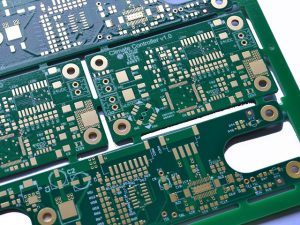If you work in the media industry, you’re probably familiar with the concept of aspect ratio. In simple terms, aspect ratio is the proportional relationship between an image’s width and height. It is an essential aspect of visual media that determines how content is displayed on screens. The two most common aspect ratios are 4:3 and 16:9. In this post, we’ll take a closer look at both of these aspect ratios, their pros and cons, and which one is best for your use.
Understanding 4:3 Aspect Ratio
The 4:3 aspect ratio has been around for decades and was the standard aspect ratio for TVs, computer monitors, and digital cameras for a long time. The aspect ratio means that the image is 4 units wide and 3 units high. This aspect ratio is also known as the “Academy Ratio” or “Full Screen” because it closely matches the shape of a traditional movie screen.
Pros and Cons of Using 4:3 Aspect Ratio
Using a 4:3 aspect ratio is compatible with a wide range of devices and applications. It is still commonly used in digital cameras, camcorders, and older TV models. Additionally, it is also suitable for presenting slideshows and other presentations, as it allows for a more square-like image that can be easily viewed by an audience.
However, the 4:3 aspect ratio has some drawbacks, particularly in modern media consumption. One of the most significant disadvantages is that it creates a smaller image than the 16:9 aspect ratio. It also does not match the natural field of view for human vision, which can result in a less immersive experience for viewers.
Examples of Devices and Applications That Still Use 4:3 Aspect Ratio
While the 4:3 aspect ratio is becoming less common, it is still used in some devices and applications. For example, some digital cameras still use 4:3 aspect ratio sensors, and older TV models use 4:3 aspect ratio screens. Additionally, some presentation software, such as Microsoft PowerPoint, still offers 4:3 aspect ratio templates.
Understanding 16:9 Aspect Ratio
The 16:9 aspect ratio is the current standard for most modern media, including HDTVs, computer monitors, smartphones, and tablets. This aspect ratio means that the image is 16 units wide and 9 units high, making it wider and more rectangular than the 4:3 aspect ratio.
Pros and Cons of Using 16:9 Aspect Ratio
Using the 16:9 aspect ratio offers a more immersive experience for viewers. The wider screen provides a more natural field of view, making the viewer feel more engaged with the content. Additionally, it is the most common aspect ratio used in modern media consumption, making it ideal for creating content for a wide audience.
However, the 16:9 aspect ratio is not without its drawbacks. One of the most significant disadvantages is that it can create compatibility issues with older devices and applications that still use the 4:3 aspect ratio. Additionally, some viewers may find the wider screen challenging to view, particularly if the content is not optimized for the aspect ratio.
Examples of Devices and Applications That Use 16:9 Aspect Ratio
The 16:9 aspect ratio is used in a wide range of devices and applications, including HDTVs, computer monitors, smartphones, and tablets. Additionally, it is the most common aspect ratio used for video production, making it ideal for creating content for online platforms like YouTube and Vimeo.
Comparison between 4:3 and16:9 Aspect Ratio
Now that we’ve explored both 4:3 and 16:9 aspect ratios, let’s take a closer look at the key differences between the two and how to choose the right aspect ratio for your use case.
Key Differences Between 4:3 and 16:9 Aspect Ratio
The most significant difference between 4:3 and 16:9 aspect ratios is their shape. 4:3 is more square-like, while 16:9 is more rectangular. This difference in shape has implications for how content is displayed and viewed.
Another is the 16:9 aspect ratio provides a more immersive experience for viewers. The wider screen allows for a more natural field of view, making the viewer feel more engaged with the content. Additionally, the 16:9 aspect ratio is more common in modern media consumption, making it ideal for creating content for a wide audience.
How to Choose the Right Aspect Ratio for Your Use Case
When it comes to choosing the right aspect ratio for your use case, there are several factors to consider. Here are some tips to help you make the right decision:
Consider your audience: Who will be viewing your content? If you are creating content for a wide audience, the 16:9 aspect ratio is a safer choice because it is the most common aspect ratio used in modern media consumption.
Consider the medium: What medium will your content be displayed on? If you are creating content for a specific device or platform, it’s important to choose the aspect ratio that is compatible with that device or platform.
Consider the content: What type of content are you creating? If you are creating content that requires a more square-like image, such as presentations or slideshows, the 4:3 aspect ratio may be more suitable. If you are creating video content, the 16:9 aspect ratio is the industry standard.
Tips for Adapting Content Between 4:3 and 16:9 Aspect Ratios
If you need to adapt content between 4:3 and 16:9 aspect ratios, here are some tips to help you do so effectively:
Use letterboxing or pillarboxing: Letterboxing involves adding black bars to the top and bottom of a 16:9 video to display it in a 4:3 aspect ratio. Pillarboxing involves adding black bars to the sides of a 4:3 video to display it in a 16:9 aspect ratio.
Crop the image: If the content allows for it, you can crop the image to fit the desired aspect ratio. However, be mindful of what is being cropped out and how it may affect the overall composition of the image.
Consider reformatting: If possible, consider reformatting the content to fit the desired aspect ratio. This may involve reshooting footage or recreating graphics and other visual elements.
Other Aspect Ratios to Consider
While 4:3 and 16:9 are the most common aspect ratios, there are other aspect ratios to consider depending on your use case. Here are a few other common aspect ratios and their uses:
1:1: Also known as the “square” aspect ratio, 1:1 is commonly used in social media platforms like Instagram and Facebook.
21:9: Also known as the “ultra-wide” aspect ratio, 21:9 is commonly used in gaming monitors and some HDTVs.
2.39:1: Also known as the “Cinemascope” aspect ratio, 2.39:1 is commonly used in widescreen movies.
Conclusion
In conclusion, aspect ratio is an essential aspect of visual media that determines how content is displayed on screens. The two most common aspect ratios, 4:3 and 16:9, each have their advantages and disadvantages depending on the content and use case. When choosing the right aspect ratio for your use case, it’s important to consider your audience, the medium, and the type of content you are creating.
If you need to adapt content between different aspect ratios, there are several techniques you can use to do so effectively, such as letterboxing, pillarboxing, cropping, and reformatting.
Lastly, there are other aspect ratios to consider, such as 1:1, 21:9, and 2.39:1, depending on your specific use case. By understanding the different aspect ratios available and how they affect the viewing experience, you can make informed decisions about the best aspect ratio to use for your visual media.
So, which is best for your use? Ultimately, it depends on your specific use case and the content you are creating. Consider the factors discussed in this post and choose the aspect ratio that best suits your needs.




